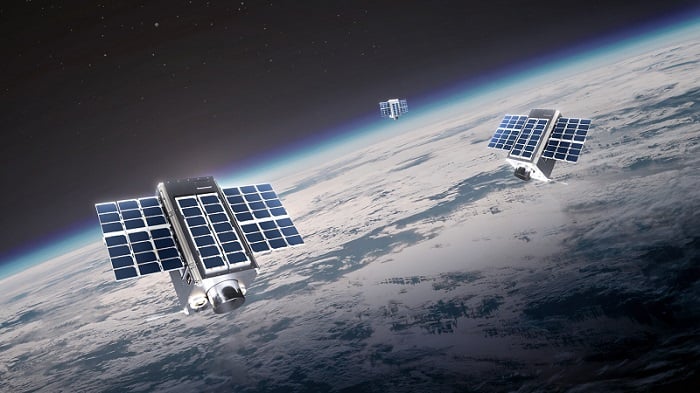ABB will build hyperspectral cameras for four GHGSat satellites set to launch in 2024. The hyperspectral camera systems will be provided for the C12, C13, C14, and C15 satellites — part of an expanding constellation of satellites that detects and quantifies industrial gas leaks from space.
The contract is the third that ABB has secured with GHGSat, which provides high-resolution remote sensing of greenhouse gas from space, and delivers emissions data and intelligence to a range of businesses, governments, regulators, and investors globally. To date, ABB has built payloads for 10 of GHGSat’s emission monitoring satellites.

ABB has been contracted to build hyperspectral camera systems for four GHGSat satellites, expected to launch in 2024. To date, ABB has provided payloads for 10 satellites in GHGSat’s remote sensing satellite constellation. Courtesy of GHGSat.
The latest contract comes after GHGSat reported earlier this year that its existing satellites doubled their methane emission measurement capabilities, using ABB’s sensors. This has allowed GHGSat to accelerate the scaling of its monitoring services, aiding industries such as oil and gas, power generation, and mining in understanding and reducing greenhouse gas emissions.
ABB has provided gas sensing technology for more than 20 years, including for the development of the Canadian Space Agency SCISAT mission payload, which profiles the concentration of more than 70 different gas types down to parts per trillion from cloud top to outer space. The company also provided hyperspectral technologies to the Japanese GOSAT program, which pioneered the global mapping at regional scale of sources and sinks of greenhouse gases from orbit starting with a first satellite in 2009 and an improved version in 2018.
ABB currently develops enhanced versions of GHGSat’s proprietary wide-angle Fabry-Pérot interferometer, which tracks the same infrared fingerprint of greenhouse gases. In the past year, according to ABB, the company has reportedly doubled its manufacturing infrastructure dedicated to space projects.